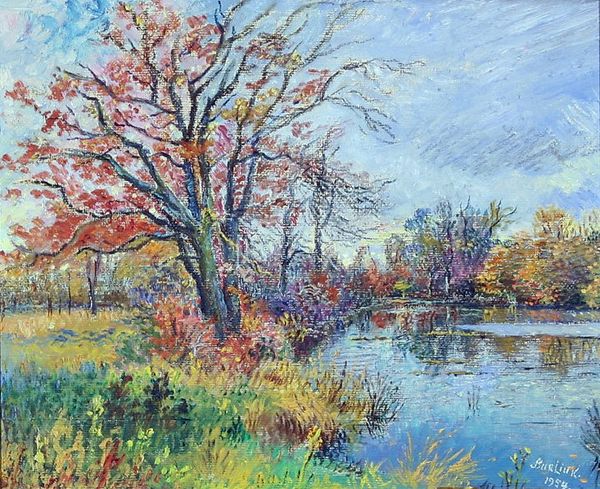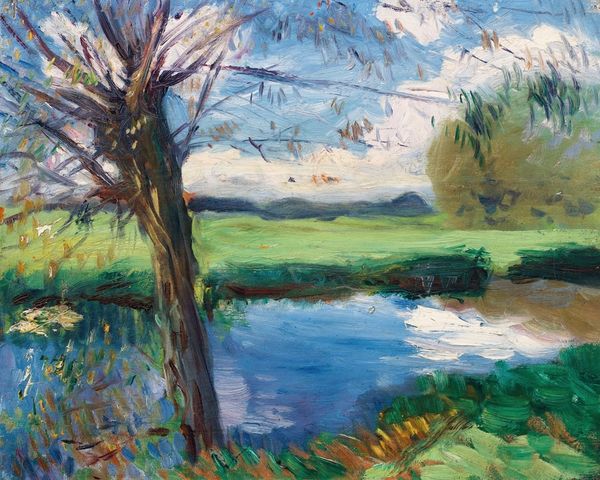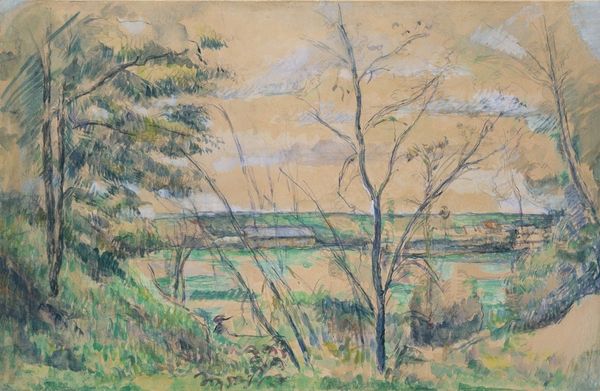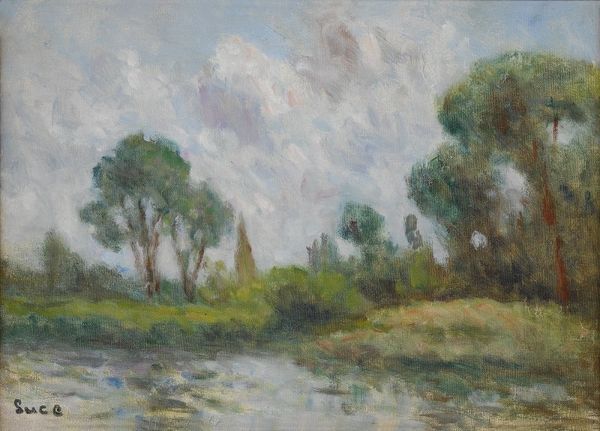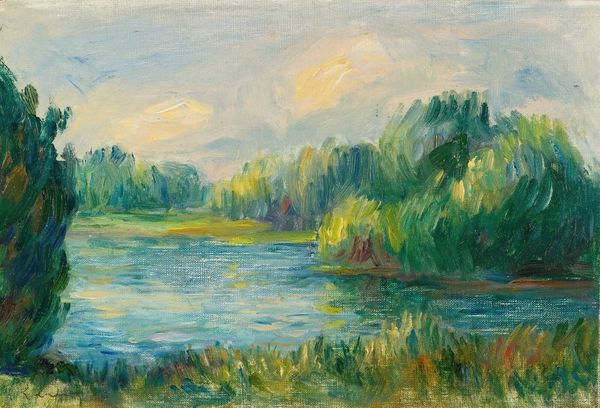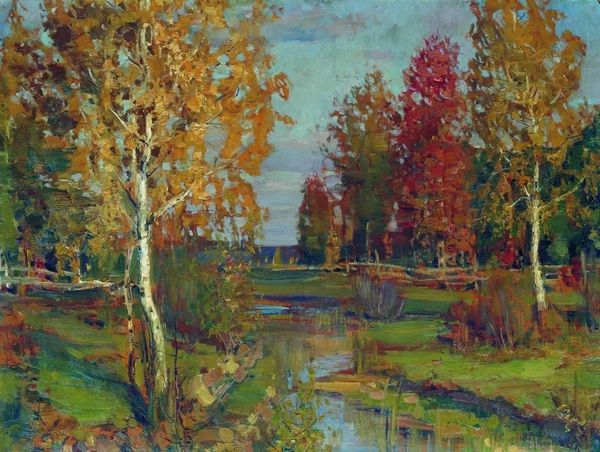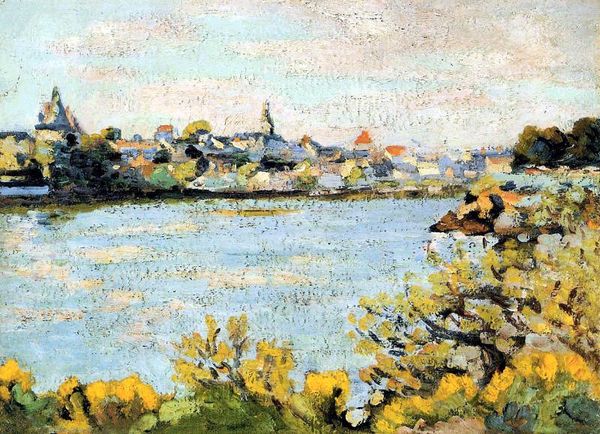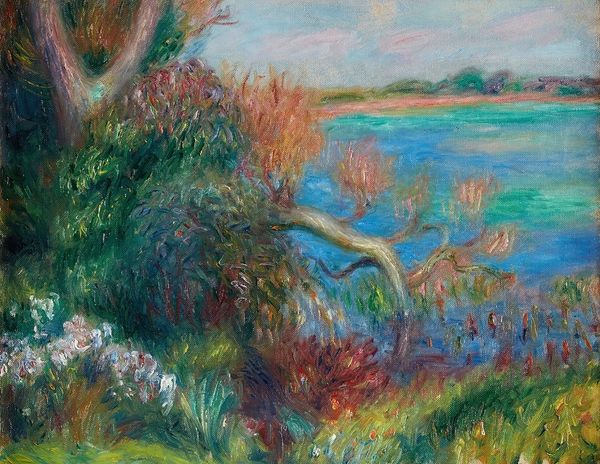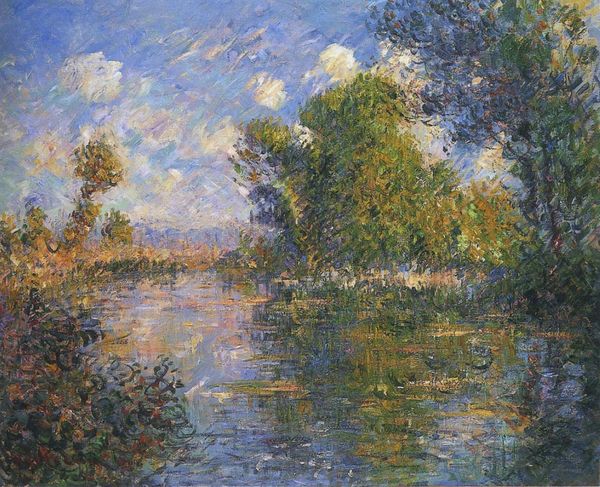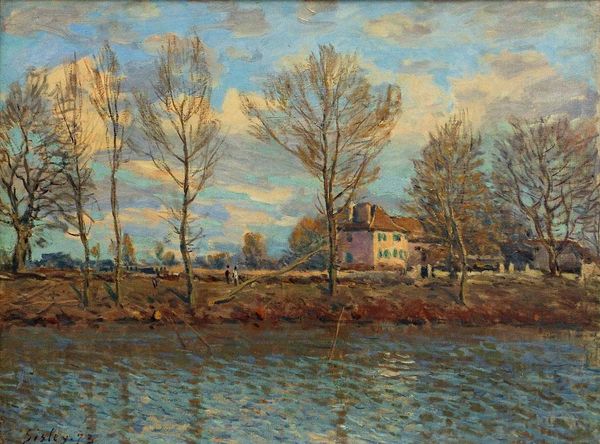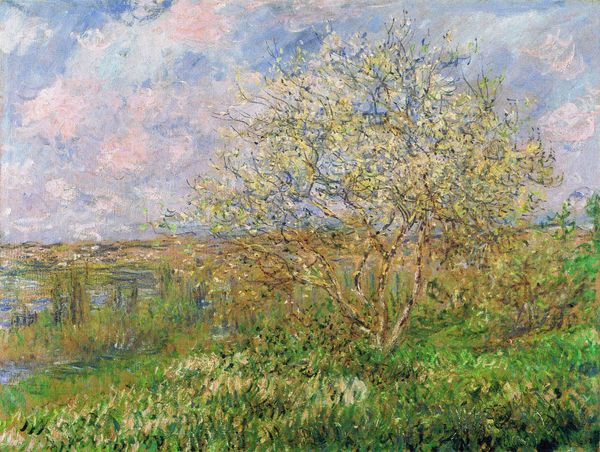
Copyright: David Burliuk,Fair Use
Editor: So, this is David Burliuk’s "Pennsylvania, Spring," painted in 1946. It’s an oil painting, and the brushstrokes are really thick and textured. It has a feeling of nostalgia to it, almost like looking back at simpler times. What do you see in this piece, from a historical perspective? Curator: It's fascinating to consider Burliuk's "Pennsylvania, Spring" through a socio-political lens. Painted just after the Second World War, its idyllic scene presents a deliberate contrast to the global trauma of the era. The art world, influenced by European traditions, was also turning its attention to American subjects at this time. What role did images like these play in shaping national identity during the post-war era? Editor: So, it’s like a conscious move away from the darkness, aiming to project an image of peace and recovery? Curator: Precisely. Consider the visual language – the accessible Impressionistic style, the pastoral scene. It's designed for broad appeal. Were works like these subtly promoting certain values or a particular vision of American life during this period of rebuilding? Think about how such landscapes were utilized in marketing and public imagery. What feelings were these intended to inspire? Editor: It makes sense. This definitely isn’t trying to shock or provoke. It feels comforting. It almost presents an idealized picture. I suppose I hadn't considered art having a function in national branding in that way. Curator: Exactly, and by choosing such accessible subject matter, it broadened the audience for art, possibly shifting perceptions of museums and art's place in society. I find it interesting that a lot of artists moved toward landscapes during times of strife and social change. Editor: This changes how I view the artwork! The way it reflects and participates in larger conversations around identity and recovery is something I definitely wouldn't have noticed otherwise. Curator: Indeed. By exploring the cultural context and historical forces behind this tranquil image, we get a deeper appreciation of art’s broader social impact and the artist's intended, and perhaps unintended, role.
Comments
No comments
Be the first to comment and join the conversation on the ultimate creative platform.

